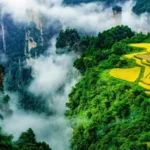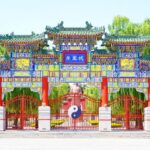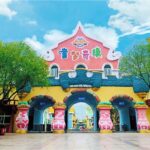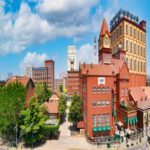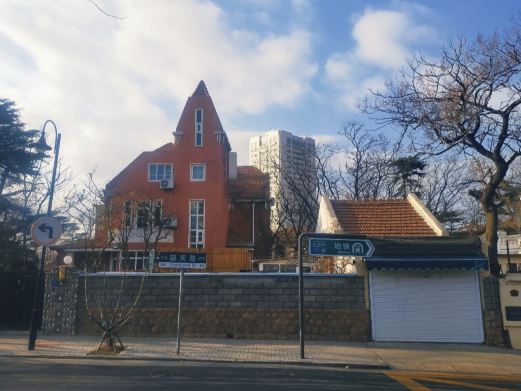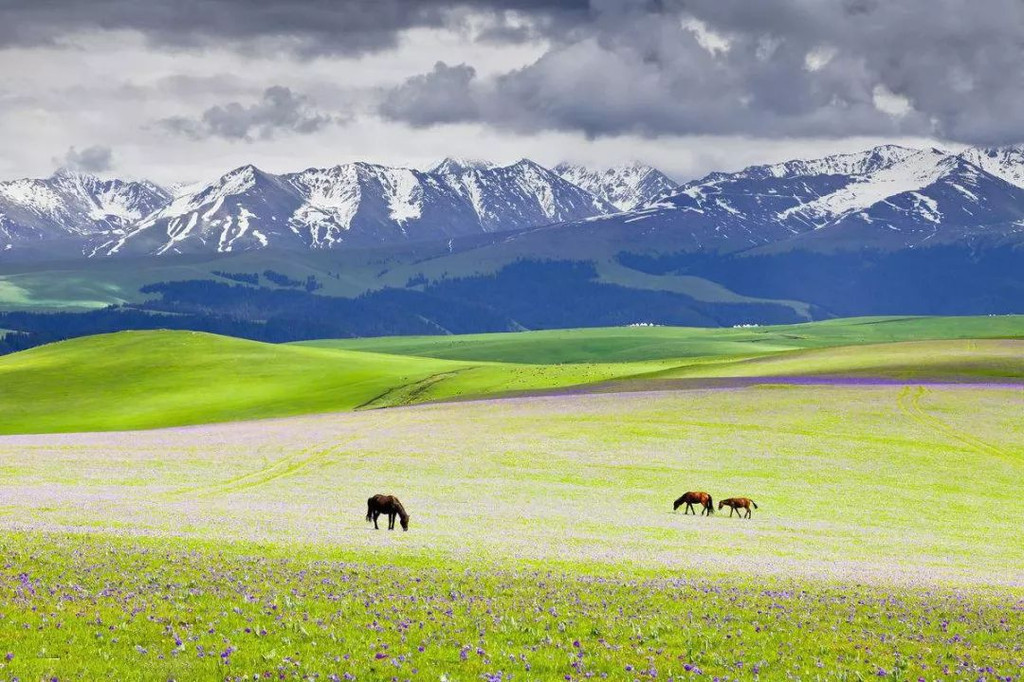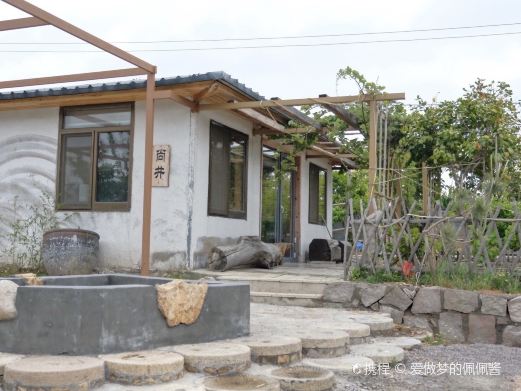Lingyan Temple is located at the northwest foot of Mount Tai, within the territory of Wande Town, Changqing District, Jinan City. It was first established during the Eastern Jin Dynasty, with a history of over 1600 years. The temple boasts a long-standing history and a rich Buddhist cultural heritage. As one of the four famous monasteries in China, Lingyan Temple enjoys a thriving incense culture.
The temple’s entrance and the hall gates are offset and do not face each other directly. After entering Lingyan Temple and passing through several halls, one arrives at the main hall, the Thousand Buddhas Hall. The hall was first built during the Tang Dynasty, with the main hall housing a gilded ‘Trikaya Buddha’ statue. The walls of the hall are adorned with hundreds of small wooden Buddha carvings, hence the name Thousand Buddhas Hall. However, the highlight of the hall is the 40 lifelike clay sculptures of arhats seated around, each with distinct expressions and postures.
After visiting the Thousand Buddhas Hall, one can detour to the northwest of the temple to admire the Bìzhī Pagoda. This is a nine-story brick pagoda with an octagonal base, engraved with reliefs depicting the conversion of Emperor Ashoka of the Maurya Dynasty in ancient India to Buddhism. It is also a landmark of Lingyan Temple.
After visiting the Bìzhī Pagoda, one can proceed uphill, taking approximately 1.5 hours to climb. There are several springs on the mountain, including Zhuoxi Spring, Baihe Spring, and Shuanghe Spring, collectively known as ‘Three Springs in Five Steps’. It is said that Zhuoxi Spring was created by an old monk who struck the ground with his Zen staff, and it is also one of the 72 famous springs of Jinan. Not far away is Jiasha Spring, named after a piece of cast iron resembling a kasaya found beside the spring during its excavation. The spring flows all year round and is the main drinking water source for the temple.
Continuing uphill past the Ganlu Spring, one will find distinctive signs for the Lingyan Mountain route. Instead of wooden signs, fluorescent pens are used to write on the rocks with arrows, making them very noticeable. This leads to Baiyun Temple, believed to be the place where Guanyin ascended to immortality. There is a natural cave at the site, with two statues of Guanyin at the end of the cave.
Continuing to climb to the summit, one arrives at the Red Gate. The Red Gate is a small temple built on the mountaintop, housing a large stone Buddha statue. From the Red Gate, one can overlook the eastern clouds where the peak of Mount Tai lies. After the visit, one can return via the same route.
Opening hours: 08:30-17:00 all year round.
Preferential policies: Children under 1.4 meters in height and under 6 years old enter for free; seniors over 60 years old with senior citizen cards or ID cards enter for free; active and retired military personnel with valid military ID cards enter for free; journalists with press cards enter for free; lay Buddhists with lay Buddhist certificates enter for free; people with disabilities with disability certificates enter for free; students under 18 years old and undergraduate students with student IDs enjoy half-price admission.
Must-see tips: Since Lingyan Temple is located on the mountain and at a relatively high position, climbing the steps can be physically demanding. It is recommended that visitors in summer bring plenty of water to prevent dehydration.
Lingyan Temple is a renowned destination in Shandong.
During the summer, the mountain path behind the temple is abundant with mosquitoes. It is advised to wear comfortable long-sleeved clothing and long pants, or bring along some essential balm.
Lingyan Temple
Lingyan Temple is located at the northwest foot of Mount Tai, within the territory of Wande Town, Ch[...]
